How to trim the claws of a cat and a cat?

You can have pets at any age, no matter who lives at home, you need to be able to take care of him. There are not many worries for cat lovers, but even with the wrong approach to business, living together with a pet can turn into a real disaster. Due to the wild nature of felines, it is necessary to protect yourself and the furniture from sharp claws, which can be used even in a harmless situation. To effectively and quickly carry out a manicure for a pet, you need to know all the intricacies of this procedure.
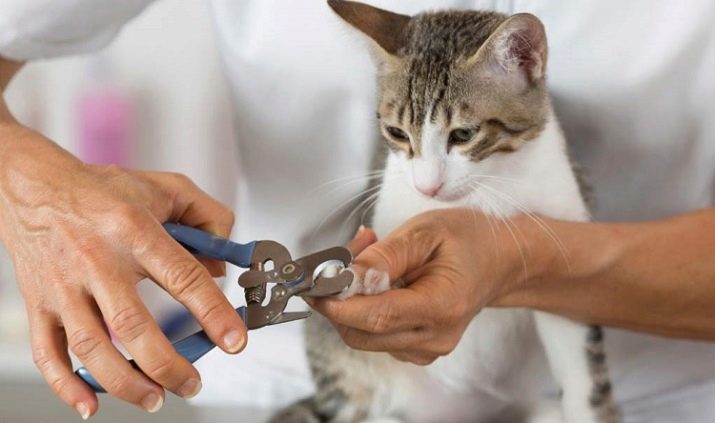
Age and purpose
Cats are pets that are often raised at home, so you need to know the basic requirements for caring for them. Since animals are by nature wild and wayward, the presence of sharp claws can be quite dangerous for those around them. To minimize risks, you need to be able to trim the claws of a cat or cat, if necessary.
There are the following reasons why this procedure is mandatory:
- keeping a cat exclusively at home;
- lack of significant activity in the behavior of the animal;
- help in grinding claws if the pet cannot do it on its own;
- too violent and unbridled character, which threatens the health of others.
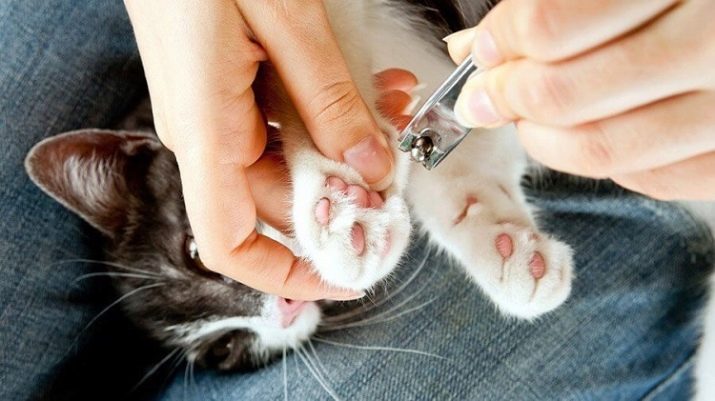
If in the first three cases the manicure procedure is desirable, then in the latter it is imperative to trim the claws of the cat, because anyone, including children, can suffer. The procedure for shortening the nail plates can be carried out on all four paws so that the cat does not feel discomfort, understanding the difference in sensations in front and behind, and is completely harmless.If the pet does not show aggression, then trimming and filing of the claws can be omitted on its hind legs.
It is not recommended to do this procedure too often, as it can negatively affect the health of the cat.... There is also a certain age range when it is worth starting such procedures in order to accustom the pet to them and not have problems with this in the future. The optimal period will be the age of two to three months, when the claws have already grown stronger and they can be cut off, and the pet is still small enough to protest, but it is quite capable gradually get used to the manicure.
Carrying out such actions for smaller kittens is harmful, since their claws are still too delicate and you can hurt the pet by cutting them off too much.

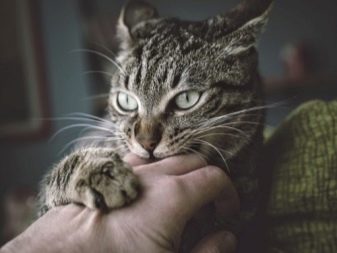
Cutting the nail plates for a cat or kitten is only possible if if there is some experience or knowledge of how the process itself should be carried out correctly. The first time is always the most difficult, both for the cat and for the owner, so it is important to prepare mentally and create all the conditions for the work to be carried out successfully. So that the kitten does not get nervous, it is necessary to caress it, talk to it, treat it with something tasty. The procedure will cease to be scary and unpleasant for the animal when he feels safe and expect a reward after the end of the manicure.
As soon as the procedure has become familiar to the pet, it is worth deciding on its frequency, so as not to trigger the state of the claws and not overdo it with shortening them. For each cat, the number of such sessions may differ, which is explained by the individual characteristics of development, the level of activity and age. The optimal norm is claw trimming once a month.
If we talk about kittens, then they are actively growing not only the body, but also the nail plates, and therefore, they will have to be shortened 2 times more often.
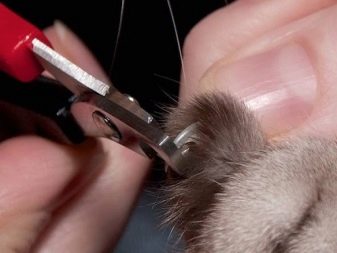
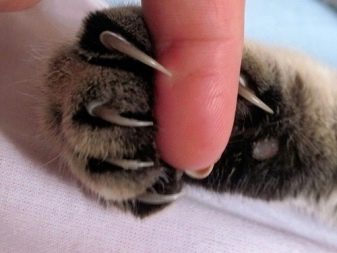
How to cut claws?
The nail plates of cats and humans are significantly different, so using classic nail scissors or forceps, with which a person cuts his nails, will not be entirely correct. A cat's claw is not only made up of keratinized cells, there is also a pulp inside, in which blood circulation takes place. If you cut the claw too hard, there is a risk of breaking the integrity of the pulp and injuring the animal. Since the claws contain a large number of harmful microorganisms, such an injury can be very severe and last for a long time.
To minimize the risk of injury to your pet, it is best to purchase specialized tools for him, with the help of which you can quickly and efficiently trim the claws without damaging the pulp.
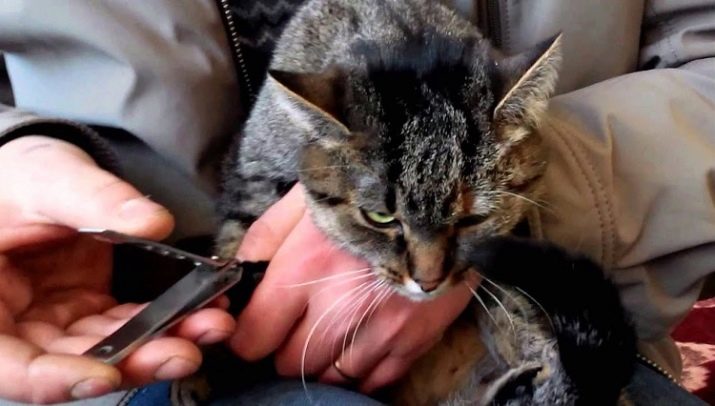
Among the main devices with which you can work, there are several.
- Specialized scissors for cats and kittens, differing in size. They are usually small in size and made of durable metal, since the thickness of the claw in cats is quite large and a poor-quality tool cannot cope with it. For the comfort of work, manufacturers make such scissors with handles that are convenient for the owner and very sharp blades that speed up the trimming of the pet's claws.
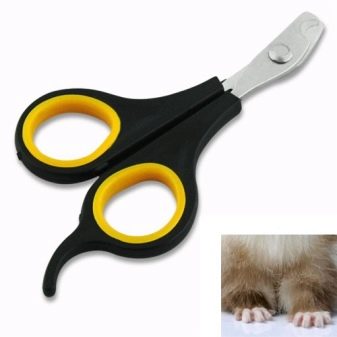

- Tweezers or nippers for the cat are also an alternative tool for trimming the nail plates. The peculiarity of using such equipment is that it is important to place it perpendicularly on the claw, otherwise it is possible to provoke stratification of the stratum corneum of the claw. It is important to purchase a high-quality tool, which will be made of durable and sharp metal that can quickly cut off the unnecessary part and not injure the claw.

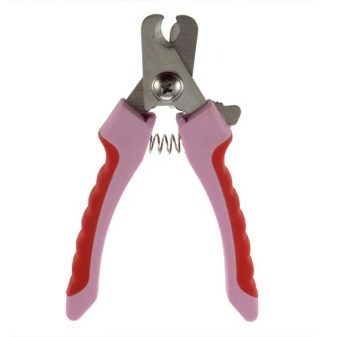
- Guillotine similar to wire cutters, but has an even more reinforced structure to provide quality results with a minimum investment of time.In this case, there is only one working blade, so the cut is made smoother, which makes it possible to trim the claws of the pet in one motion.
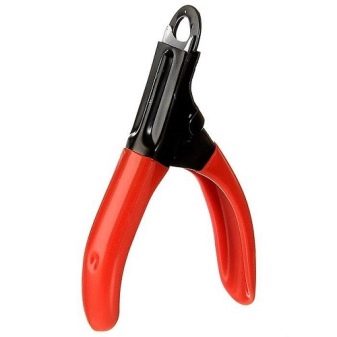
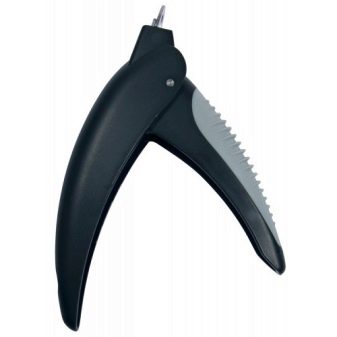
- Electric trimmer differs from all previous options, since it has a completely different principle of operation. In this case, the claws are not cut off, but grinded with the help of special rollers and wheels with abrasive spraying. To make the procedure safe, special caps with a hole for the claw are sold for such additional equipment. When the pet is ready for the procedure, its foot should be positioned so that it is easy to grind down all the nail plates, one by one.
Gradual grinding can save your pet from injury and make the process more comfortable.


The choice of this or that tool may be dictated by the age of the animal, its character, the experience of the owner and the habits of using something specific.
For beginners, you can try all of the above options and stop at what will allow you to quickly and efficiently carry out a manicure for your pet.
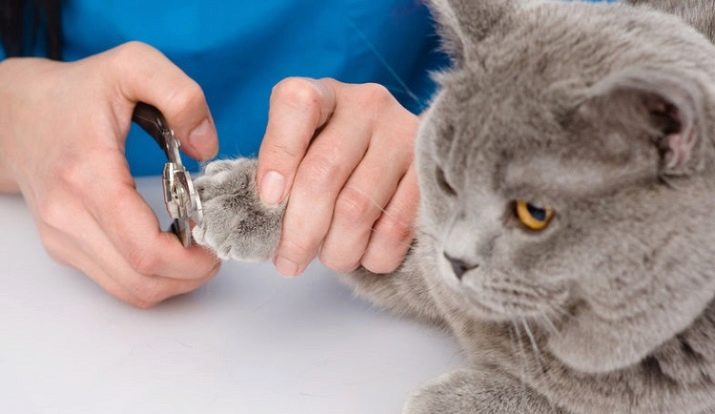
Step-by-step instruction
To trim the claws of a cat at home, you need to properly prepare for this procedure. If the manicure will be carried out by the owner of the house, then first of all it is necessary to buy all the necessary equipment, as well as learn how to use it. To minimize the risks, it is important to follow the safety precautions, which are as follows:
- treatment of the claw cutter with an alcohol solution for sterilizing the instrument;
- preparation of the pet and stimulation of the appearance of claws by pressing on the pad of the foot;
- quickly and confidently cutting off the excess part of the claw.
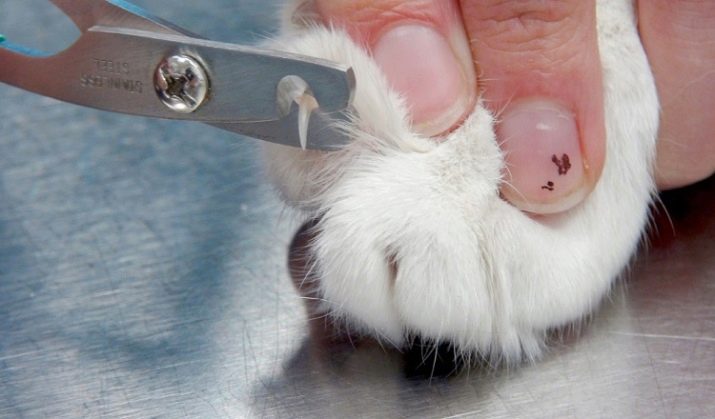
When preparing for the procedure, you need to have with you additional hygiene products, such as: cotton pads, a clean towel, hydrogen peroxide, a nail file. For long-haired breeds, you can also prepare scissors to trim off excess hair, which can interfere with manicure work. For the convenience of the procedure, it is important to choose the right time when the cat is calm and ready to cooperate, otherwise it will be difficult to achieve the desired result, and the pet may get stressed and refuse to repeat the manicure.
To protect the animal, it is recommended to wrap it in a towel or other cloth in which the cat will be comfortable.
To reduce the risk of resistance, it is best to separate your pet's legs and hide them until it’s turn for each of them.

The claw trimming process requires the owner to comply with the following rules:
- providing a comfortable and comfortable position for the cat - do not force the animal to manicure, the pet must come to the owner when he has prepared all the necessary tools;
- protection of the owner during work - during the first sessions, it is necessary to think not only about the comfort and safety of the animal, but also about your own, since the pet can behave unpredictably and unconsciously injure the owner. It is best to wear products with long sleeves made of dense fabric, and a glove on the free hand that will hold the cat, which will serve as a protective barrier in the event of a sudden attack by the pet;
- cut the claw correctly - the length of the part to be cut should not exceed 2-3 mm, otherwise there is a risk of touching the blood vessels and causing very painful sensations in the animal;
- selection of the optimal cutting angle - if the instrument is placed incorrectly, as a result of clipping the claw, it may simply crack, which will complicate work with it, cause painful sensations and increase the healing time of the cat's paw.

If the pet clearly protests against the manicure and cannot cope alone, then initially you need to take someone from your family to help you to hold or directly trim the claw.As soon as the fluffy animal calms down and gets used to the process, you can get by with the forces of one of the cat's owners. The procedure for a cat manicure will look like this:
- mentally prepare the pet for the future procedure, calm and caress;
- prepare one of the legs, gently press the pad to show the claws; it is important not to press hard so that the cat does not get scared and does not run away;
- the claws of cats are transparent, so you can see the edge that needs to be removed, and the pulp, which has a pink tint, should not get too close to it;
- the claw cutter is taken perpendicularly and the edge of the claw is cut in the same position; to make the edges smoother and safer, they are filed neatly.

Important! Depending on which paws will be manicured, it is worth remembering that there are five claws on the front, and four on the back. If the procedure is not carried out on time, the old claw can cause discomfort to the cat, which will undoubtedly affect its behavior.
Helpful hints
In order to independently trim your furry pet's claws, it is important to know not only the features of the process, but also the possible risks and problems during its implementation. If the cat is aggressive, then the removal of sharp areas of the claw becomes a necessity; either a veterinarian or someone at home will carry out this procedure. Due to the nature of the character, it will be very difficult to trim the claws. If the cat resists and breaks free, does not allow to work normally, you need to know what to do in such a situation, namely:
- do not force and try to repeat the procedure a little later, waiting for a calmer state of the animal;
- use swaddling, which will significantly help protect yourself from the claws of an obstinate animal;
- communicate with your pet and calm him down throughout the claw trimming process.

Working with aggressive pets is not easy. It is better not to delay teaching the cat to manicure, because in adulthood it will be extremely difficult to get used to such manipulations, each session will be a real test for both the cat and the owner.
For calm pets, swaddling and calming procedures are not necessary, they will behave calmly without causing any discomfort.
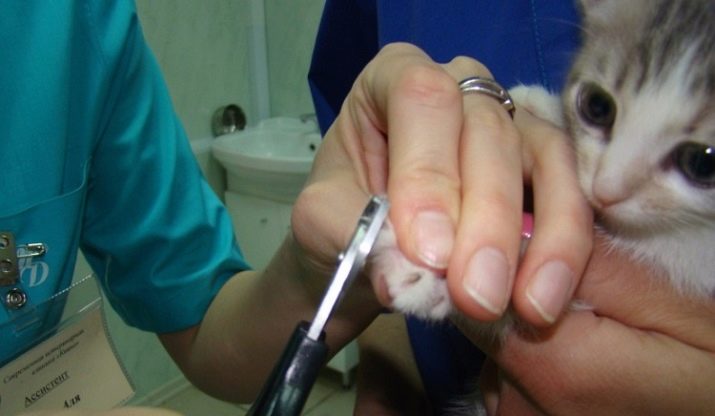
In order for the haircut procedure to be fast and of high quality, you should familiarize yourself with the following tips:
- the selection of the tool must be carried out responsibly - it is better not to buy products that are too cheap, since they quickly become dull, and this can cause the claw to split or delaminate;
- it is best to do a manicure during the day in natural light, so that it is easier to notice the cut edge of the claw and minimize the risk of injury;
- after cutting the claw, it must be sanded with high quality, for which a hard nail file or an emery bar may be suitable; if this procedure is not done, the cat may catch its claws on the carpet, sofa upholstery or other fabrics, which will lead to injury to the animal, creases or claws;
- the first times it will be difficult for a cat to sit on his hands for a long time, while the owner puts things in order on his paws, therefore it is recommended to start with one limb per day, gradually increasing the daily norm of claws, bringing it to trim all the nail plates at a time without discomfort for favorite;
- since claw trimming is not a vital necessity for a cat, you should not plan other hygiene procedures on the same day, so as not to upset your pet; for each type of activity, it is better to choose a separate day and, after the completion of the work, thank the animal for cooperation, which will enhance its positive feelings after such procedures.
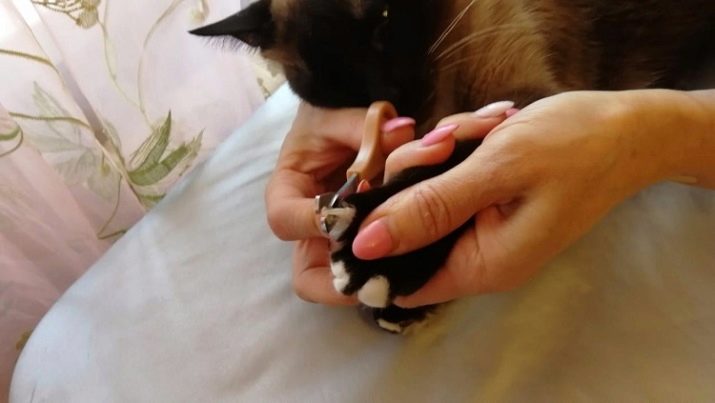
Keeping pets seems simple and convenient, but in fact it means taking care and adhering to strict rules and recommendations regarding many points related to food, hygiene, walking, and so on, so before you start a pet, you should weigh all the advantages and shortcomings, after which he will stop at some kind of solution.

You can find out how easy it is to trim a cat's nails by watching the video below.
































